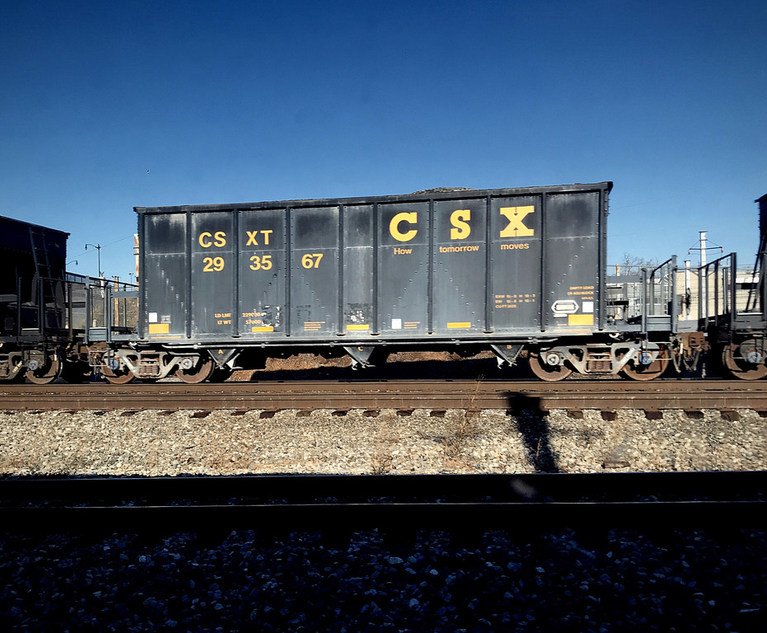 CSX freight train passing through Union Station in Washington, D.C. Photo: Diego M. Radzinschi/ALM
CSX freight train passing through Union Station in Washington, D.C. Photo: Diego M. Radzinschi/ALM
The Georgia Court of Appeals has been asked to decide how far a railroad's duty extends when parking train cars for customers after a client's employee was injured trying to move one. How the appellate court rules will determine how far a railroad's duty of care to its customers extends.
Recommended For You
Want to continue reading?
Become a Free PropertyCasualty360 Digital Reader
Your access to unlimited PropertyCasualty360 content isn’t changing.
Once you are an ALM digital member, you’ll receive:
- Breaking insurance news and analysis, on-site and via our newsletters and custom alerts
- Weekly Insurance Speak podcast featuring exclusive interviews with industry leaders
- Educational webcasts, white papers, and ebooks from industry thought leaders
- Critical converage of the employee benefits and financial advisory markets on our other ALM sites, BenefitsPRO and ThinkAdvisor
Already have an account? Sign In Now

